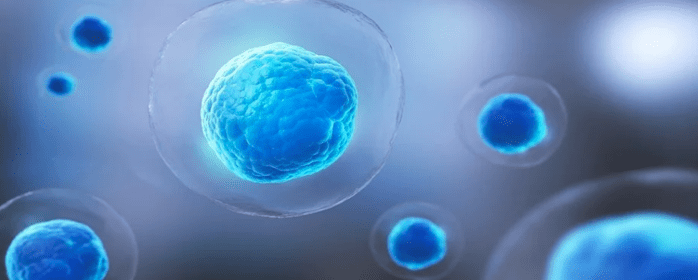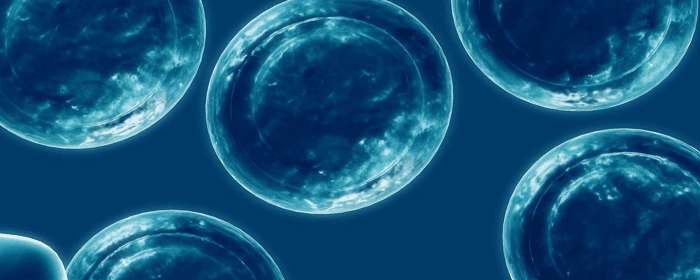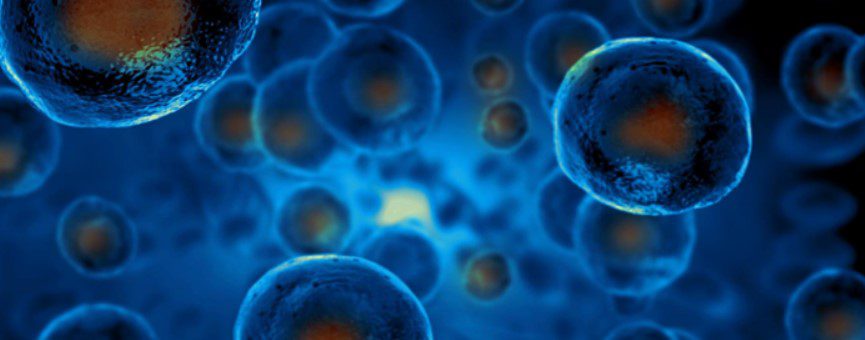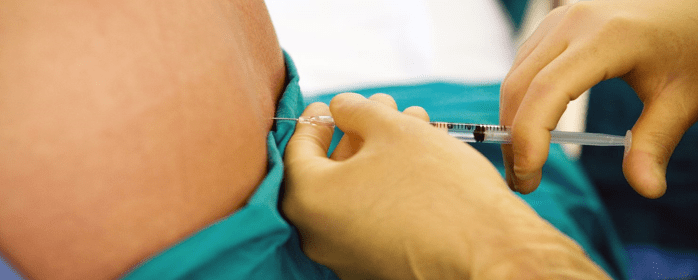
by admin | Dec 21, 2023 | Lupus, Exosomes, Extracellular Vesicles, Mesenchymal Stem Cells, Regenerative Medicine, Stem Cell Research, Stem Cell Therapy
Systemic lupus erythematosus (SLE) is a common multisystemic autoimmune disease that often results in multi-organ damage when left untreated. Currently affecting over 1.5 million Americans, the etiology and pathogenesis of SLE continue to remain unclear.
At present, glucocorticoids and immunosuppressants are the most prescribed course of therapeutic treatment and mostly as a way to manage and treat symptoms of SLE, not the cause itself.
Considering that the etiology and pathogenesis of SLE are accompanied by immune disorders including abnormal proliferation, differentiation, and activation and dysfunction of T cells, and that mesenchymal stem cells (MSC) and MSC-derived extracellular vesicles (EVs) play important roles in the immunity process, researchers are increasingly turning their attention to MSCs and EVs as potential therapeutic treatment options for SLE.
In this review, Yang et al. examine the immunomodulatory effects and related mechanisms of MSCs and EVs in SLE with hopes of better understanding SLE pathogenesis and guiding biological therapy.
Examining the potential use of MSC and MSC-EVs in SLE treatment the authors found some studies have established that MSCs reduce adverse effects of immunosuppressive drugs and when combined have demonstrated distinct effects on T cell activation and bias.
Additionally, Yang et al. report that MSCs are able to participate in the immune response in two distinct ways: paracrine effect and directly through cell-to-cell interaction. Since reconstruction of immune tolerance and tissue regeneration and repair are required parts of SLE treatment and since MSCs possess high self-renewal ability, rapid expansion in vitro and in vitro, and low immunogenicity, allogeneic MSC transplantation has demonstrated strong evidence for the therapeutic potential of MSC in SLE.
Besides the ability to repair and regenerate tissue, MSCs, and MSC-EVs have strong anti-inflammatory and immunomodulatory effects, making them a potentially ideal treatment option as part of a therapeutic strategy for SLE. Considering that MSC-EVs have similar biological functions with MSCs, but are also considered cell-free, the authors point out that MSC-EVs could be the better choice for SLE treatment in the future.
Despite the potential of MSC and MSC-EVs, Yang et al. point out that genetic modification, metabolic recombination, and other priming of MSCs in vitro should be considered before MSC/MSC-EVs application for SLE treatment. The authors also recommend further clinical evaluation of the time of infusion, appropriate dosage, interval of treatment, and long-term safety of MSC/MSC-EVs in the treatment of SLE before any form of the combination is used as a treatment option.
Source: “Immunomodulatory Effect of MSCs and MSCs-Derived Extracellular ….” 16 Sep. 2021, https://www.ncbi.nlm.nih.gov/pmc/articles/PMC8481702/.

by Stemedix | Dec 18, 2023 | COPD, Health Awareness, Regenerative Medicine, Stem Cell Research, Stem Cell Therapy
Chronic obstructive pulmonary disease (COPD) affects nearly 16 million adults in the United States. According to the Centers for Disease Control and Prevention, it is the sixth leading cause of death in the country. COPD refers to a number of progressive lung diseases that affect all aspects of your life, potentially leading you to not being able to work or participate in your favorite activities. There are some good habits, therapies, and treatments for COPD that you can turn to.
The Basics of a COPD Diagnosis
COPD is an umbrella term that includes a number of different progressive lung diseases. A COPD diagnosis means you have one or more of these conditions — the two most common being chronic bronchitis and emphysema.
Chronic bronchitis irritates the bronchial tubes, leading to their swelling. This causes mucus to build along the lining, making breathing more difficult. People who smoke or who have chronic bronchitis have damaged cilia, which are tiny hairs that usually move mucus out of the way. This means the mucus continues to build up.
Emphysema is the wearing down of the walls of the alveoli, or minuscule air sacs, found at the end of your bronchial tubes. These air sacs help transfer oxygen into your blood and carbon dioxide out, so if they don’t work efficiently, breathing becomes very difficult.
Some of the symptoms of COPD include:
- Wheezing
- Shortness of breath performing regular activities
- Cough with mucus that persists
- Struggling to take a deep breath
Smoking is one of the main causes of COPD, but it can also result from being exposed to secondhand smoke, air pollution, and workplace fumes and dust.
Most people who have COPD have a combination of emphysema and chronic bronchitis. Although there’s no cure for COPD, there are many treatments and lifestyle change you can try to get relief from symptoms.
Learning to Manage COPD Symptoms
To manage your COPD, you can turn to a number of strategies.
Medications: Bronchodilators and More
Bronchodilators come as nebulizers or inhalers because this allows the medications to reach your airways faster. Bronchodilators help open constricted airways, and there are two types of them — β-agonists and anticholinergics.
There are also anti-inflammatory medications you can inhale or take in pill form. Expectorants are another type of medication you may need. Expectorants help thin out mucus so that you can cough it up more easily.
Regenerative Medicine: Stem Cell Therapy
One of the most promising options for the treatment of COPD is regenerative medicine. Stem cell therapies allow you to stimulate your body’s natural healing processes, helping reduce inflammation so that the nutrient- and oxygen-rich blood can better reach your lungs and bronchial tubes.
Reducing inflammation can make breathing easier and can even reduce mucus production. Although stem cell therapy won’t cure COPD, it can help with the symptoms and might even help with the regeneration of damaged tissues in your airways.
Lifestyle Changes: Healthy Habits to Turn To
Making lifestyle changes is also important treatments for COPD. Staying active can be one of the most difficult things to do when it’s tough to get enough breath, but exercising helps strengthen muscles while also improving endurance. Exercise helps your body learn to use oxygen more efficiently. Try activities like walking, golfing, and gardening.
If you smoke, it is best to quit. If there are others in your family who smoke, you also need to get them to quit because every time you are exposed to smoke, it irritates your airways and causes more damage.
You also want to maintain a healthy weight. Being overweight puts pressure on your whole body, including your lungs and airways. Losing weight can help improve your breathing, reducing the episodes of shortness of breath.
Make sure to eat correctly as well. Avoid foods that can cause inflammation, including sugar, fried items, processed meats, and more. Reduce your intake of junk food. Instead, add more fruits and vegetables to your diet.
Consider getting vaccinated for the flu and other potential respiratory illnesses. Any infection can make COPD symptoms worse, so taking preventive actions can save you a lot of stress. In the same vein, wash your hands often and limit exposure to people who may be ill.
If you need to use supplemental oxygen, make sure to use it exactly as your doctor recommends. Lots of people don’t want to be seen with their oxygen tanks and cannulas when they are out in public, but not using them can be detrimental to your health.
You need to get enough rest as well. Shortness of breath can exhaust you, weakening your systems and making dealing with everyday life more difficult. When you get a good amount of rest, you allow your body to repair itself.
The air quality in your home is also crucial. Indoor air in homes is often more polluted than outdoor air. Installing a filter can be a great way of improving air quality.
Although it’s impossible to avoid all instances of stress, reducing it as much as possible is important. Stress causes the release of cortisol, which can trigger inflammatory responses in the body. This inflammation makes COPD symptoms worse.
You also need to avoid your COPD triggers. These can be different for everyone, so understanding what causes worsening issues is crucial so that you can make the necessary adjustments to your lifestyle and environment. It can include avoiding certain cleaning products, ensuring that there’s no dust in your living space, and more.
Living With COPD Is Possible
If you have COPD, you may not be sure what treatments options will offer the kind of results you can depend on. For most people, a combination of medications, lifestyle changes, and even regenerative treatments provide the necessary help for the management of symptoms.
Stem cell therapy and other regenerative medicine options can assist in the reduction of inflammation and even help bring better blood flow to the lungs. Ask your healthcare provider if it is the best choice for your COPD.

by admin | Dec 14, 2023 | Parkinson's Disease, Mesenchymal Stem Cells, Regenerative Medicine, Stem Cell Research, Stem Cell Therapy
Parkinson’s disease (PD) is the second most predominant neurodegenerative disorder worldwide, affecting over 10 million people. Characterized by a slow and progressive loss of control of the neurological system as a result of dopamine depletion, symptoms of PD often include tremors, slowed movement, impaired posture and balance, and gradual loss of automatic movements.
While PD cannot be cured, current treatment is focused on alleviating symptoms and slowing the progression of the disease. Specifically, deep brain stimulation or therapies to increase DA levels by administering a DA precursor are the available therapy options for PD.
However, research has found that DA precursor therapy has little effect on the progression of PD and its efficacy decreases as the disease progresses.
Recent progress in the clinical understanding of regenerative medicine and its properties associated with stem cell therapy has provided the opportunity to evaluate new and potentially effective methods for treating a wide range of neurodegenerative illnesses, including PD. Specifically, mesenchymal stem cells (MSCs) have been found to be the most promising form of stem cell and have demonstrated the ability to differentiate into dopaminergic neurons and produce neurotrophic substances.
In this review, Heris et al. discuss the application of MSCs and MSC-derived exosomes in PD treatment.
Research has identified dysregulation of the autophagy system in the brains of PD patients, suggesting a potential role for autophagy in PD. In PD models, MSCs may activate autophagy signals and exhibit immunomodulatory effects that alleviate inflammation and improve tissue healing; this type of treatment had previously been used in treating various forms of neuroinflammatory and neurodegenerative illnesses.
The authors indicate that MSCs can be administered either systemically or locally. While systemic transplantation allows MSC-based treatment of pathologies affecting the entire body, local transplantation aims to alleviate symptoms associated with illnesses that originate from certain organs and is performed through intramuscular or direct tissue injection.
Research has also demonstrated that stem cell-derived dopaminergic transplants could be a suitable method for the long-term survival and function of transplants; in the case of MSC therapy, the average dose in animal models is usually 50 million cells for each kg of weight.
MSC-derived exosomes demonstrate therapeutic characteristics similar to their parents, have the ability to avoid whole-cell post-transplant adverse events, have a high safety profile, cannot turn into pre-malignant cells, and no cases of immune response and rejection have been reported.
While the use of MSCs in the treatment of PD continues to show potential, Heris et al. point out that many of the clinical trials have had few participants and can be costly. Considering these limiting factors, the results from these studies are not able to be generalized to everyday medical care without further clinical studies to address these concerns.
Source: “The potential use of mesenchymal stem cells and their exosomes in ….” 28 Jul. 2022, https://stemcellres.biomedcentral.com/articles/10.1186/s13287-022-03050-4.

by Stemedix | Dec 11, 2023 | Stem Cell Therapy, Alzheimer’s Disease, Autoimmune, Health Awareness, Osteoarthritis, Parkinson's Disease
Treatment of injuries and damage to organs and other tissues as a result of the aging process or conditions has often relied on managing symptoms. By offering painkillers and steroids, healthcare providers can keep you more comfortable, but they are not targeting the cause of the problem. This means you have to keep relying on medications. One option more people are exploring is regenerative medicine, also known as stem cell therapy. This type of regenerative medicine offers the chance to treat the underlying cause of the issue so that you can achieve lasting relief. In this article we will discuss how does stem cell therapy work?
What Is Stem Cell Therapy?
Stem cell therapy utilizes stem cells, which are those that create specialized cells. They can regenerate damaged or dying cells. Although you retain stem cells throughout your life, the aging process can make them less effective. This aging can lead to injuries that don’t heal completely, causing chronic pain and many other problems.
The goal of stem cell therapy is to amplify your body’s natural healing processes. To do this, it relies on stem cells.
In stem cell therapy, these cells are often harvested from the patient’s own body or from donors, and then administered to the affected area or systemically. The goal is to encourage tissue regeneration, repair damaged cells, and promote healing. Stem cells can differentiate into the specific cell types needed to replace or repair damaged tissues, making them a promising treatment for a wide range of conditions.
Stem cell therapy has shown potential in treating conditions such as heart disease, neurological disorders (e.g., Parkinson’s and Alzheimer’s disease), autoimmune conditions, and orthopedic injuries.
Benefits of Stem Cell Therapy
Stem cell therapy is a less invasive option than many other therapies. It requires the removal of stem cells from fat or bone marrow and then the injection of the prepared stem cells at the site of the damage. This not only makes it a viable option for those who can’t undergo surgery, but it also means the recovery process is shorter.
Another benefit of stem cell therapy is that it helps reduce inflammation. When you get injured, your body responds by causing inflammation to prevent the spread of damaging agents while also helping remove pathogens and cell debris. Inflammation also helps prepare the area for the repair process.
In some instances, however, inflammation doesn’t go away, leading to chronic pain. Inflammation also makes it more difficult for the wound to heal because the area is not receiving enough blood.
Stem cell therapy helps reduce this inflammation, allowing oxygen and nutrients to make their way to the damaged area. Less inflammation results in less pain.
Stem cell therapy is also a quick procedure. It can be done as an outpatient option, and it doesn’t require general anesthesia. Because most people benefit from adult stem cells, the procedure also avoids the need to worry about rejections or allergic reactions.
What to Expect from the Stem Cell Therapy Procedure
The first thing you will need to do is reach out to your healthcare provider to see if you are a good candidate for stem cell therapy. Your provider will go through your medical history to see which types of stem cells you can benefit the most from. The kind of condition or injury you have will impact this choice.
If you’re using your own stem cells, your healthcare provider will collect a sample from your bone marrow or fat. They then process them in a laboratory to isolate and concentrate them. In some cases, the process can involve centrifugation, filtering, and other options to help collect the highest number of stem cells.
The next step is receiving the stem cells, which can take place intravenously, with an injection, as well as other administration techniques.
After you receive the stem cells, your healthcare provider will monitor you to ensure there are no complications. They will also schedule follow-up phone calls to monitor how you are doing post-treatment.
Most people can get right back to their daily activities with some minimal post-treatment guidelines without having to worry about long recovery times.
Available Stem Cell Treatments
How does stem cell therapy work & what are the available treatments? Stem cells can help treat a variety of conditions. It’s helpful in treating cartilage regeneration and osteoarthritis because the stem cells can differentiate into chondrocytes, which are cells that maintain cartilage.
It’s also an option that can help with scar reduction and wound healing. For this procedure, stem cells derived from fat cells are a good option. They can help with tissue regeneration, potentially leading to healing chronic wounds and even the prevention of scarring.
Stem cell therapy is also a good choice for neurodegenerative issues. It can help replace neurons and provide neuroprotective benefits, potentially leading to slowing down the disease’s progression.
Stem cell therapy may also target ligament and tendon injuries, which are common in people who are very active. This type of therapy can help speed up the recovery process and might even be able to prevent the development of chronic pain issues that can affect mobility.
Another way stem cell therapy is able to help is by treating autoimmune diseases. Most autoimmune diseases are impacted by inflammation, so an option like stem cell therapy, which helps reduce swelling, can be helpful.
Choosing Stem Cell Therapy for Lasting Results
Stem cell therapy offers hope for the treatment of many types of conditions. By targeting the cause of pain and chronic injuries, like inflammation, you can avoid relying solely on pain medications, which only mask symptoms. Stem cell therapy makes it possible to have available options to help manage orthopedic injuries, neurodegenerative conditions, and much more.
If you want to learn more about how does stem cell therapy work and not sure whether stem cell therapy is a good option for your needs, speak with a regenerative medicine specialist. They can let you know if you are a good candidate.

by admin | Dec 7, 2023 | Mesenchymal Stem Cells, Regenerative Medicine, Stem Cell Research, Stem Cell Therapy
Stem cells respond to signals released by damaged or diseased tissue by differentiating in an effort to replace these cells.
As researchers continue to learn more about the various applications of stem cells as they relate to the body’s healing process, they’ve discovered two significant issues relating to the process of stem cell application. The first issue involves various methods that enable the stem cell transformation to targeted cells or successful engrafting. The authors of this review indicate that there are many proposed solutions to this issue, which are not covered as part of this review.
In this review, Maric et al. address the second known issue, analyzing cell homing. More specifically, understand how to direct the migration of most of the transferred cells to the desired location. Research has demonstrated that the greater the number of administered stem cells, the better the treatment outcomes. However, research has also indicated that there is a saturation plateau where no additional benefit has been achieved.
Previous studies have demonstrated positive results for non-invasive methods of stem cell transplant. However, it’s typical for stem cells to dissipate to other organs rather than to the brain, which are the targeted areas for a wide spectrum of neurodegenerative diseases.
Reviewing the existing research on stem cell homing, the authors draw a number of conclusions, including the location of the stem cell injection site impacts the homing results with better migration results when injections are closer to the targeted locations; preprocessing may increase homing efficiency; there are a number of potential methods that may improve the homing mechanisms; understanding the mechanism of neurodegenerative disease is essential to understanding the homing process and to predict the engraftment results; stem cells improve the plasticity of the brain; and that intrathecal application has many benefits, fewer adverse effects, and has been shown to be safe.
Additionally, Maric et al. raise issues that require further study, including evaluating the discrepancy between in vivo and in vitro results; paying more attention to the prospects of mathematical, physical, and computer models and simulations; investigation of real-time development and spatial information of the homing processes; and the need for a deeper understanding of homing mechanisms in homing mechanisms in intrathecal and other ways of administration.
The authors conclude that, in the case of neurodegenerative diseases, intrathecal application of stem cells via direct delivery to the cerebrospinal fluid has the advantage of no blood-brain barrier restriction, further study into the long-term study of what specifically slows the migration of injected cells is required.
Source: “Stem Cell Homing in Intrathecal Applications and Inspirations … – NCBI.” 13 Apr. 2022, https://www.ncbi.nlm.nih.gov/pmc/articles/PMC9027729/.

by Stemedix | Dec 4, 2023 | Regenerative Medicine, Adipose, Age Management, Stem Cell Research, Stem Cell Therapy
No one wants to grow old. That is apparent from the huge amounts of money people spend on anti-aging products and services each year. These products and services include everything from lotions to more invasive options like plastic surgery.
However, healthier aging is possible without relying on invasive procedures. Stem cell rejuvenation, for example, offers promising results for people searching for ways of going through a healthier aging process.
Intrinsic vs. Extrinsic Aging: What to Know
Intrinsic aging refers to the various traits you inherited, including collagen and elastin production levels, hormonal balance, and more. The thinning lips or particular types of wrinkles you see on your parents, for example, are intrinsic aging traits, and you will likely deal with them as you age, too.
Intrinsic aging doesn’t just refer to visible signs of aging. It also includes the damage that occurs to organs and other body tissues as you get older. How fast an organ deteriorates and how fast tissues regenerate to keep up with the damage all depends on intrinsic aging.
Extrinsic aging refers to the things that you can control about aging. It includes lifestyle choices like smoking, not eating correctly, and so much more.
Both intrinsic and extrinsic factors in aging begin to accumulate, sending messages of aging to the core of stem cells. Thus, everything associated with aging can be seen through the lens of stem cells.
Understanding Stem Cell Rejuvenation
Introducing youthful stem cells into the body can make it easier to rejuvenate existing cells, helping the body age in a healthier way and even offering the chance to reverse some of the effects of aging.
As you age, your cells are not as efficient at replicating as they were when you were younger. This leads to cells getting damaged and dying off. Inefficiency in cell replication leads to aging bodies.
Stem cells are the cells that create specialized cells. They are your body’s building blocks. To combat the natural aging process, stem cells can help regenerate damaged tissue. This is because they can be made into various cell types.
Stem cells can also stimulate the production of growth factors and other molecules that trigger healing mechanisms, helping maintain healthy tissues. Chronic, low-grade inflammation is associated with aging, and stem cells help to reduce inflammation.
They do this by impacting the processes of white blood cells. Macrophages are white blood cells that are integral to the immune system. M1 macrophages can create inflammation, while M2 macrophages reduce it.
Stem cells help transform M1 macrophages into M2 macrophages. This stimulates the process of reducing inflammation.
Another way stem cells help battle against the aging process is by modulating the immune system. They have the potential to maintain a healthy immune system and delay the type of immune dysfunction that comes with age.
Oxidative stress also plays a role in aging. Free radicals damage cells, leading to many of the issues the aging process causes. Stem cells help combat the effects of oxidative stress.
Stem cells also have the potential to affect visible signs of aging. They can increase collagen production, which is vital for maintaining skin flexibility and firmness. As part of the aging process, your collagen production decreases, leading to the formation of fine lines and wrinkles.
The Process of Stem Cell Rejuvenation
Stem cell rejuvenation begins with choosing the right type of stem cells. The main stem cell type used is mesenchymal stem cells.
Mesenchymal stem cells (MSCs) are a type of multipotent stem cell that can differentiate into a variety of cell types. They are typically found in the stromal or connective tissue of various organs and tissues in the body.
MSCs were first identified in the bone marrow, but they can also be isolated from other tissues such as adipose (fat) tissue, and umbilical cord tissue.
MSCs possess immunomodulatory properties, meaning they can regulate the immune system. They can influence the activity of immune cells, such as T cells and macrophages, and have anti-inflammatory effects. This makes them potentially useful for treating conditions with immune system dysregulation.
MSCs exhibit low immunogenicity, meaning they are less likely to provoke an immune response when transplanted into a recipient. This characteristic makes them potentially suitable for allogeneic (from a donor) transplantation.
MSCs have been studied for their potential therapeutic applications in regenerative medicine, tissue engineering, and treatment of various diseases, such as autoimmune disorders, cardiovascular diseases, and musculoskeletal conditions.
If from a patient’s own tissues, the healthcare provider extracts the stem cells and prepares them for injection. They then inject the stem cells into the treatment area to provide relief from inflammation while encouraging your body to start regenerating tissues at the same time.
Because stem cells have the ability to endlessly duplicate themselves, the benefits of stem cell therapy for rejuvenation purposes can only improve over time.
Benefits of Stem Cell Rejuvenation
Stem cell rejuvenation procedures are minimally invasive. They require an extraction of stem cells and then an injection or the introduction of an IV. Other procedures that target aging can be significantly more invasive, leading to long recovery times.
The results continue to improve over time. This is because stem cells will go on to multiply where they were injected, potentially leading to more powerful results.
Stem cell rejuvenation can target the aging process at the cellular level, helping reduce inflammation and prevent oxidative stress. Stem cells may lead to an increase in collagen production as well, which helps combat fine lines and wrinkles.
Choosing Regenerative Medicine
Anti-aging solutions don’t have to involve invasive procedures or the reliance on options that take a very long time to work. Regenerative medicine treatments like stem cell therapy offer the chance to tackle the causes of aging at the cellular level.
Stem cells can offer anti-inflammatory results while also targeting free radicals and helping repair damaged tissues as well as damaged stem cells. By turning to regenerative medicine options, you have the chance to find rejuvenation solutions that can work.







 St. Petersburg, Florida
St. Petersburg, Florida
